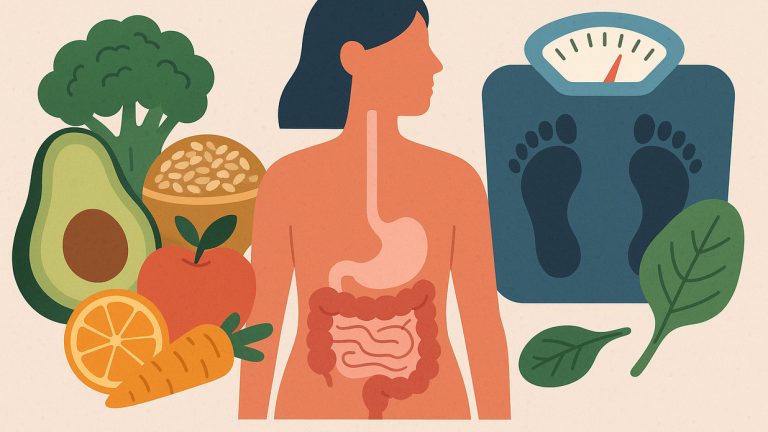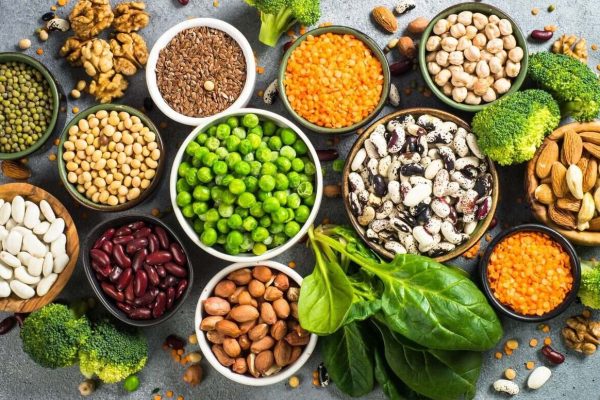How Fiber Supports Daily Digestion
Fiber plays a key role in how smoothly the body processes food. It helps keep things moving through the digestive tract and supports regular bowel movements. Without enough fiber, digestion slows down, often leading to discomfort or constipation.
There are two main types of fiber—soluble and insoluble. Soluble fiber forms a gel-like substance in the gut, which helps soften stool. Insoluble fiber adds bulk and helps food move efficiently through the system. Together, they create a balance that keeps digestion steady.
Foods high in fiber—like whole grains, fruits, vegetables, beans, and seeds—work best when eaten consistently. Even small changes, like swapping white bread for whole grain or adding berries to breakfast, can improve digestion over time.
Keeping You Fuller for Longer
One of fiber’s most noticeable effects is how it curbs hunger. Fiber-rich foods tend to take longer to chew and digest, which naturally slows down the eating process. This gives the body time to recognize fullness before overeating happens.
Because fiber moves slowly through the stomach, it extends the feeling of being satisfied. That means fewer cravings later in the day and less snacking between meals. It supports appetite control without needing strict calorie counting or restrictions.
Meals built around fiber—like a vegetable stir-fry with brown rice or a lentil soup—deliver comfort while also helping with portion control. That kind of support adds up across days and weeks, making it easier to maintain balanced eating habits.
The Connection Between Fiber and Weight
Fiber doesn’t just help with digestion—it also plays a role in managing weight. Since it helps regulate appetite and delays hunger, it naturally supports better portion choices and a reduced intake of processed foods.
Studies have shown that diets higher in fiber are often linked to lower body weight and improved weight stability. This isn’t about quick results—it’s about small, long-term changes that make weight goals more sustainable and less stressful.
Choosing fiber-rich meals and snacks encourages more mindful eating. It’s not about removing foods but rather focusing on those that support the body’s natural rhythms and signals.
How Fiber Affects Blood Sugar Stability
Another reason fiber matters is how it helps manage blood sugar levels. When fiber is present in a meal, it slows the breakdown of carbohydrates. This means sugar enters the bloodstream more gradually, preventing sharp spikes and crashes.
Stable blood sugar is helpful for everyone, not just people with diabetes. It supports steady energy levels and reduces mood swings and fatigue that often follow high-sugar meals. That’s why whole grains and legumes are such solid choices during busy days.
Pairing fiber with protein and healthy fats—like in a chickpea salad or avocado toast on whole grain bread—creates a balanced plate that works with the body, not against it.
The Role of Fiber in Gut Health
The gut isn’t just a place where food is processed—it’s home to trillions of bacteria that help with digestion, immunity, and even mood. Fiber acts as fuel for these bacteria, helping them grow and thrive.
This kind of fiber is called prebiotic fiber. Found in foods like bananas, oats, and onions, it supports the growth of beneficial microbes. A diverse, well-fed gut microbiome helps prevent inflammation and improves how nutrients are absorbed.
When fiber is missing from the diet, gut bacteria begin to decline. Over time, this can affect not just digestion but how the body feels day to day. Keeping fiber on the plate keeps the gut in balance.
Easy Ways to Add More Fiber to Your Meals
Getting more fiber into your routine doesn’t require a complete overhaul. Simple swaps—like adding vegetables to pasta or switching from fruit juice to whole fruit—make a noticeable difference.
Starting the day with oats or whole grain toast, tossing a handful of beans into soups, or snacking on nuts and carrots are all easy upgrades. These small shifts build up and make higher fiber intake feel natural, not forced.
Keeping meals colorful also helps. Different fruits and vegetables offer different types of fiber, and aiming for variety keeps meals interesting. Even one new fiber source a week can refresh a routine.
Hydration and Fiber Work Together
As fiber increases, so should water intake. Fiber needs water to move smoothly through the digestive system. Without enough fluids, adding more fiber may lead to bloating or discomfort.
Drinking water consistently throughout the day supports digestion, especially when eating fiber-rich meals. Herbal teas and water-rich foods like cucumbers and melons also contribute.
It’s a partnership. Fiber supports structure and movement, and water keeps that process flowing. Together, they make a simple but effective team that supports daily health.
High-Fiber Foods That Fit Any Lifestyle
Fiber doesn’t belong to any one type of diet. It’s found in a wide range of foods, making it easy to include whether eating plant-based, gluten-free, or omnivorous meals. The key is picking whole, unprocessed ingredients more often.
Quinoa, apples, lentils, flaxseeds, pears, and whole grain cereals are just a few options that can be mixed into meals or eaten on their own. These ingredients work well in breakfasts, snacks, and dinners alike.
Rather than focusing on numbers or labels, thinking about whole foods can be more effective. When meals are built with real ingredients, fiber often finds its way in naturally.
Fiber’s Gentle Support for Long-Term Health
Beyond digestion and weight, fiber also supports heart health, reduces cholesterol, and may lower the risk of certain diseases. It works quietly in the background, helping the body stay balanced over time.
It doesn’t ask for special attention—it just asks to be included. A bowl of soup with beans, a salad with sunflower seeds, or fruit added to cereal all bring the benefits of fiber without changing how you eat too drastically.
This steady kind of support is often the most effective. Fiber becomes part of the rhythm of daily life, offering care without complexity.
A Consistent Foundation for Wellness
When fiber is part of everyday meals, things just work better. Digestion is smoother, hunger feels more manageable, and energy stays steady. It doesn’t rely on trends or short-term plans—it simply supports the body in doing what it already knows how to do.
Whether you’re looking to feel better day to day or support bigger health goals, fiber offers a starting point that’s simple and accessible. It brings relief, rhythm, and quiet support in every bite.
And best of all, it can be found in the foods people already enjoy—just a little more often, and with a little more intention.




